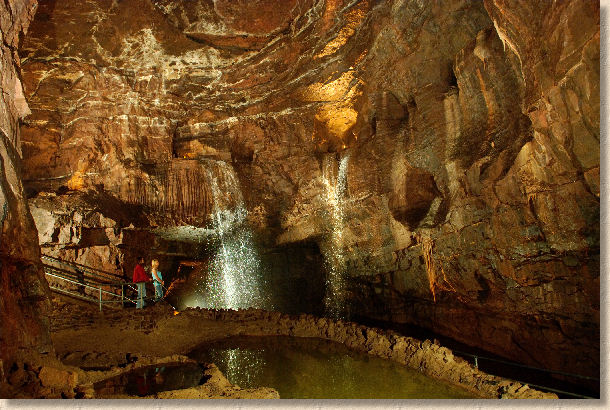Underground Surfacing
There are two lifelong interests that never fail to tweak my interest when I hear them mentioned. Paving is perhaps overly obvious, but I'm also fascinated with geology and have been ever since I was at primary school when a trip to Malham Cove blew my mind with the realisation that this bloody great grey cliff in the middle of chilly and damp northern England was once the sea bed in a tropical climate.
So, when a surfacing manufacturer manages to incorporate a bit of the earth science into one of its special projects, I'm all ears and desperate to know more. When Ronacrete revealed they were intimately involved in creating the access paths for one of Britain's true geological treasures, I'm busily scanning my calendar to see when I can skive off to go and visit the site before I've actually finished reading the article!
The National Showcaves Centre for Wales near Swansea contains three caves; the Dan yr Ogof Showcave, which is the largest cave in Europe, the Cathedral Showcave and the Bone Cave, where bones of Bronze Age people were found. The caves and the stalactites and stalagmites within them were naturally formed, beginning around 315 million years ago, when water entering cracks and fissures in the limestone began to dissolve the rock, creating a cave system.
The paths leading up to and through the caves were man made in much more recent times!

Being underground, the Showcaves Centre is an ideal wet weather attraction and is exceptionally popular with families and schools, receiving over 40,000 visitors annually and so it is essential that any paving used within the complex is both slip-resistant and durable.
The system used by the Centre for their paths is Ronacrete's Ronadeck Resin Bonded Surfacing which is a hardwearing surfacing system composed of a resin base and natural aggregates that offers excellent slip-resistance and can withstand the heavy footfall year after year.
Ronadeck Resin Bonded Surfacing is normally laid on concrete or asphalt and less frequently on steel or timber decks. In this case the base was asphalt and because the asphalt's surface was open textured, Ronadeck Resin Bonded Scratch Coat was applied first, to produce a smooth substrate for the surfacing. The two component resin was then mixed with a drill and paddle mixer and applied by roller to the asphalt. The special aggregate was immediately cast into the resin and left to cure for four hours. After excess loose aggregate had been swept off, the pavement was ready for immediate use. The client chose to use silver grey Guyanan Bauxite because the slip and wear resistance is unsurpassed and because the colour blended with its surroundings.


